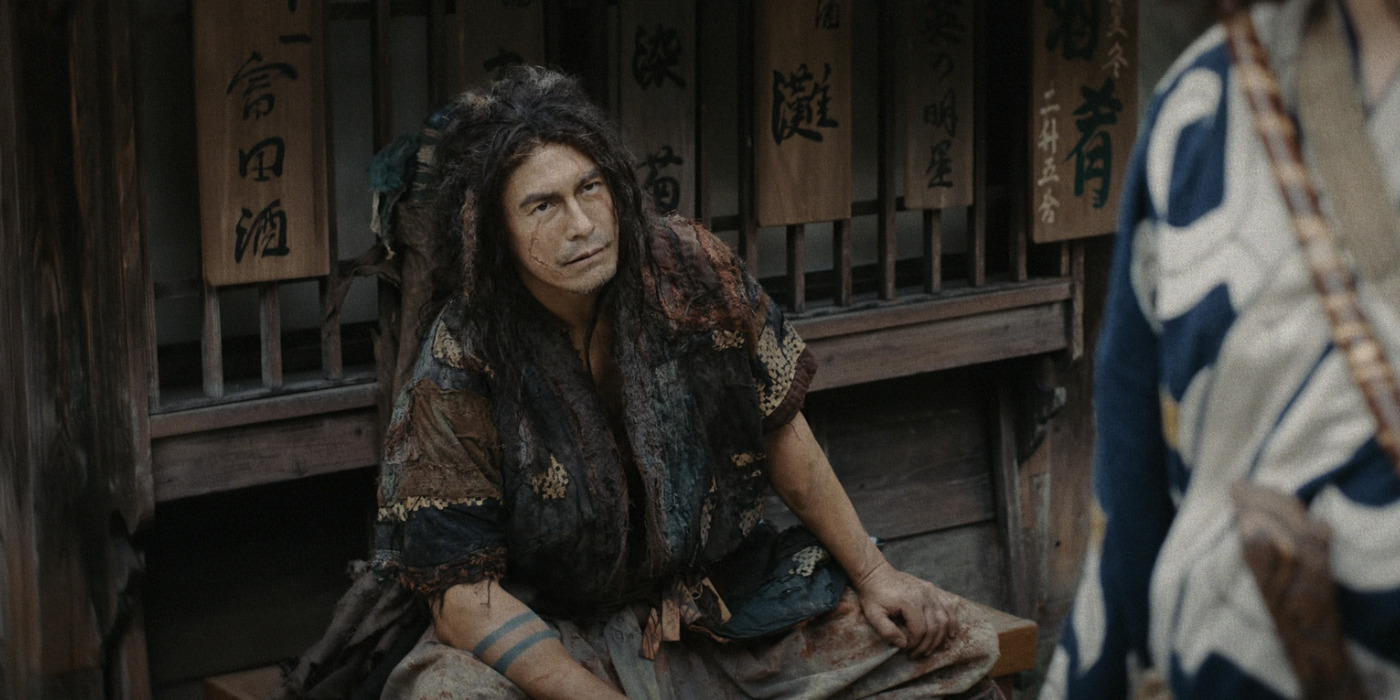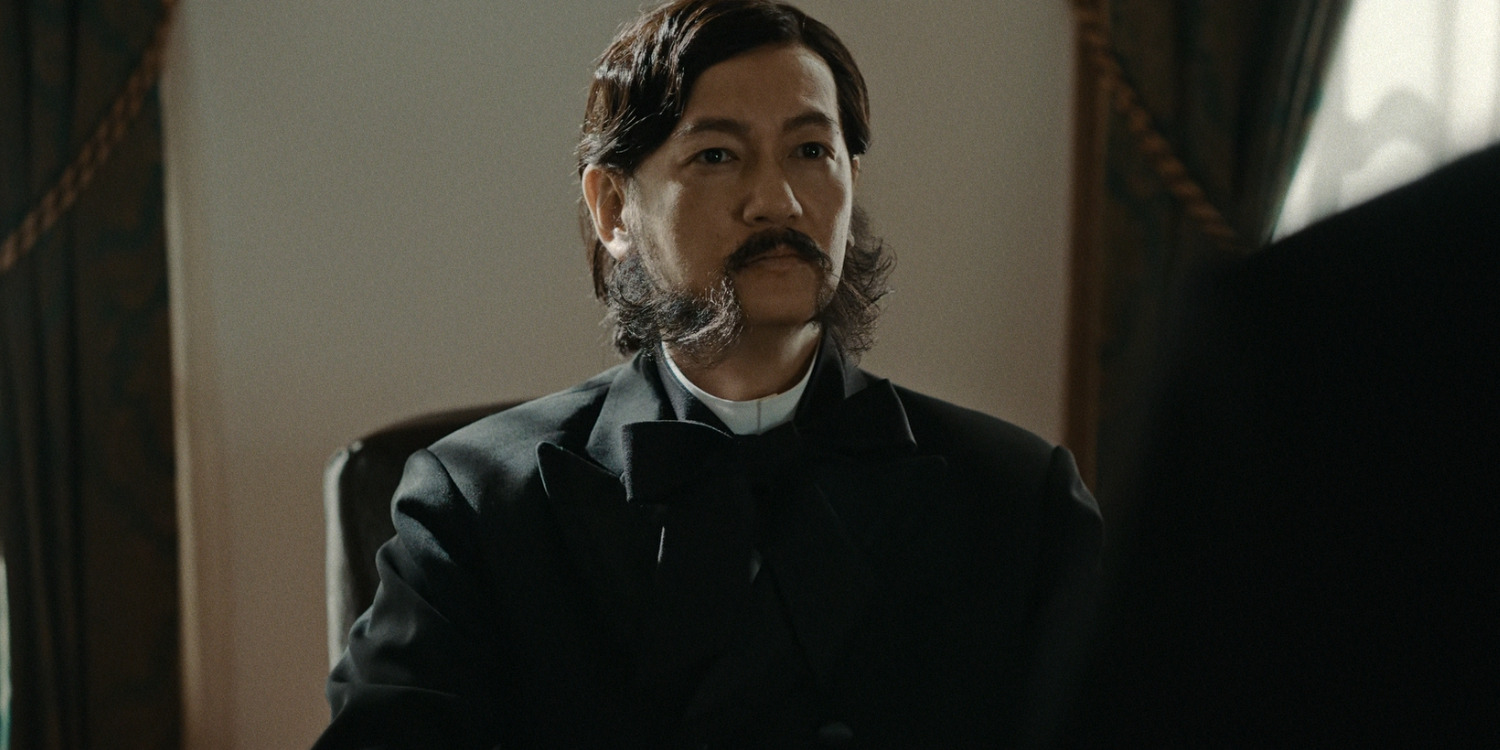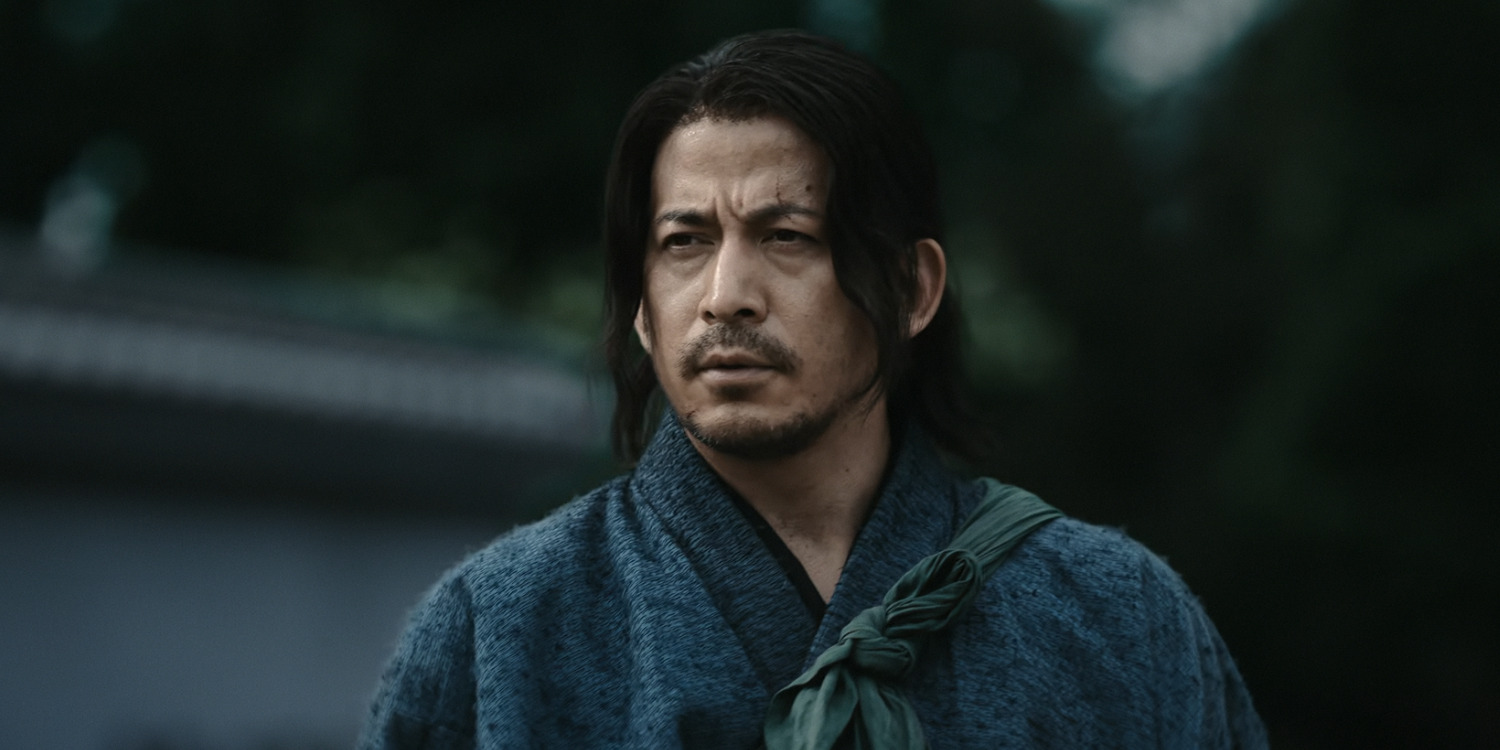‘Last Samurai Standing’ is a period drama series that centers around a survival competition of kill-or-be-killed, where hundreds of warriors compete for a lucrative jackpot at the end of the line. Created by Michihito Fuji, the show is set in 1878, during a time when the samurai class has been relegated to an era of bygone glory. Stripped of their social and political powers and banished from drawing their swords, the once-revered class of warriors has to now live out their days as civilians. Like many others, Shujiro Saga, formerly known as Kokushu the Manslayer, struggles in this new life as his family and his village become ravaged by the demons of poverty and pestilence.
Therefore, when the opportunity arises to earn 100 thousand yen, Shujiro and 292 other warriors are eager to participate. Yet, things take a deadly turn once they realize the Kodoku competition, involving a month-long quest to Tokyo, can only be won by killing other participants and stealing the wooden tags from their corpses. The series remains rich in historical relevance, transporting the viewers to a time of social and political upheaval in Japan, especially in connection to the Samurai class. As such, the protagonist and his riveting narrative become natural points of intrigue.
Last Samurai Standing is Based on the Historical Fiction Novel Ikusagami
‘Last Samurai Standing’ presents a narrative that offers an authentic lens into the history of the samurai class, especially in their waning years during the Meiji era. However, despite its dedication to relative historical accuracy, the premise of the story itself remains rooted in fictionality. The show is largely based on Shōgo Imamura’s 2022 book ‘Ikusagami,’ illustrated by Katsumi Tatsuzawa. As such, the foundation of the Kodoku competition and its impact in violently eradicating the samurai class remain works of fiction with no direct basis in real life. Yet, the novel also significantly relies on historical accounts and context to ground this fictional premise in reality.

Consequently, ‘Ikusagami’ ends up being a fictionalized narrative told against the backdrop of a deeply historical setting. Naturally, given the show’s basis in Imamura’s novel, the live-action adaptation follows in a similar footstep, charting a story that remains a mix of fact and fiction. For Michihito Fujii, a co-writer and director on the series, the novel presented a refreshing narrative that he felt could be relatable to the contemporary audience. In a conversation with Tudum, he said, “It (‘Ikusagami’) felt unexpectedly close to our own experience with Covid-19. It’s a story about ideology and one’s destiny, yet it was entertaining and had a gamelike quality. I remember thinking I could never have come up with this myself.” Ultimately, the show utilizes the source material to tell an expansive story about the history of the samurai.
Last Samurai Standing Delves Deep Into the Socio-Political Reality of the Meiji Era
As an adaptation of Shōgo Imamura’s book ‘Ikusagami,’ ‘Last Samurai Standing’ inevitably takes the occasional creative liberty, diverging from the source material to expand upon the narrative. Still, even in these instances, the show’s dedication to achieving relative historical accuracy ensures that the narrative remains grounded and period-appropriate at all times. The series is set in the 1870s, with frequent flashbacks to the Boshin War of the 1860s. This period of social and political transition was a historically prominent time for the samurai, as it saw their diminishment as a warrior class. During Japan’s Edo period, the warrior class had a high social and political standing. However, with the Meiji era and the restoration of the Imperial rule, this social, cultural, and political reality underwent a drastic shift. After the Boshin War, the samurai were reclassified as the shizoku. This marked a notable end to their previously high-ranking regard in society and politics.

By 1876, the samurai were banned from carrying daishō (a matched pair of Japanese swords, historically equipped by the warrior class). In order to accurately bring this era of the samurai to the screen, Michihito Fuji and the other creatives involved in the show’s production delved into extensive historical research. From accurate geographical context, cultural practices, to historical events, the creative team behind the show strived to imbue the story with as much historical realism as possible. Furthermore, historical figures like Japanese military general Toshiyoshi Kawaji, statesman Ōkubo Toshimichi, and politician Baron Maejima Hisoka were also incorporated into the narrative. Even though their on-screen counterparts engage in fictionalized storylines, the characters manage to achieve a level of authenticity regarding the real-life individuals’ influence and gravity.
Shujiro Saga is a Fictional Samurai Whose Story Tells a Realistic Tale
Given the fictionality of the base premise of ‘Last Samurai Standing,’ the protagonist of the story, Shujiro Saga, finds a similarly fictitious origin. In real life, there are no records of a similarly titled samurai in Japanese history. Instead, the character of Kokushu the Manslayer remains a fictionalization, who first appears in Shōgo Imamura’s ‘Ikusagami,’ created entirely in service of the story. Nonetheless, despite his fictional genesis, Shujiro’s character becomes an important vessel in the show’s depiction of the samurai class during the Heiji era. Through his narrative, the story delves into the drastic societal and political transformation of the warrior class during the end of their glory days. Furthermore, Shujiro’s characterization retains a crucial connection to the samurai culture, resulting in a realistic and authentic depiction.

In a conversation with The Week, lead actor and co-producer Jun’ichi Okada discussed the intention of the show’s unique depiction of the legendary historical warriors. He said, “There was a time in Japan when the vocation or occupation of samurai disappeared. I think most of the classics and masterpieces in this genre explored the other side of their position, the struggling side, and I wanted to ensure this story was abundant in its depiction of that.” Likewise, Michihito Fuji saw Shujiro and the other samurai’s narratives as an opportunity to tell a story about the transitional identity in the context of Japan’s history. Additionally, the on-screen depiction of Shujiro’s character benefits greatly from Okada’s history with martial arts. The actor, who is also a renowned fight choreographer, served as the Stunt Choreographer on this project, infusing a sense of realism behind Shujiro’s charged action sequences.
Read More: Last Samurai Standing Ending Explained: Why Did Kyojin Betray Shujiro and the Others?


